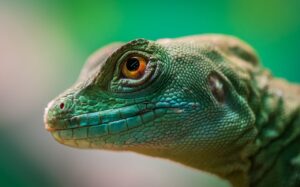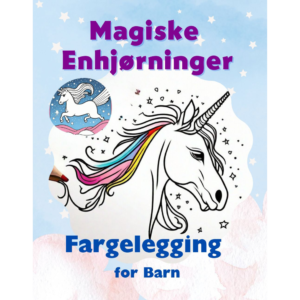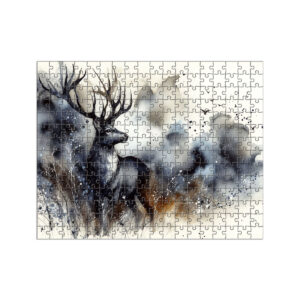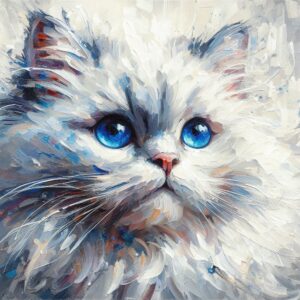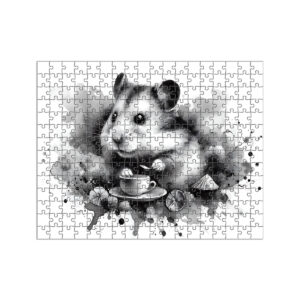
Explore & Play
Discover interesting topics and solve the accompanying crossword puzzle.
Creature Crossword | World of Mythical Creatures
Table of Contents
Start by challenging yourself with the creature crossword at the top of this page, testing your knowledge of mythical beings. If you’re less familiar with the topic, feel free to dive into the article first to learn more, and then return to the crossword to see how much you’ve absorbed. Whether you choose to play first or read, the journey into the world of mythical creatures awaits!
Creature Crossword
You can either fill in the crossword puzzle directly on this page or click the button in the bottom right corner to print it for free.
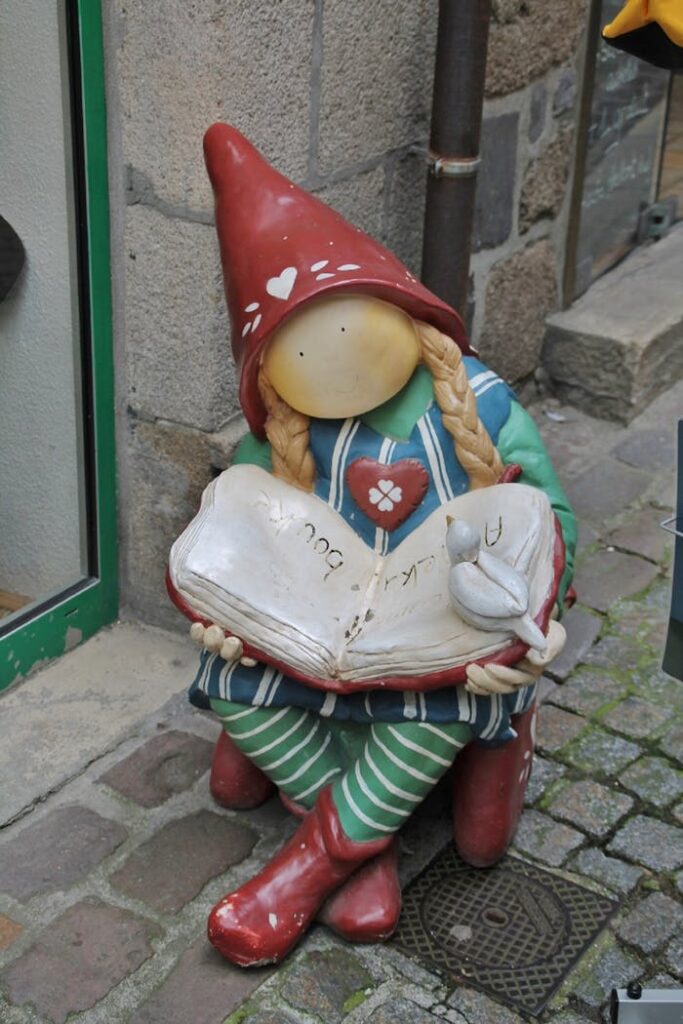
The Fascinating World of Mythical Creatures: Exploring Legends and Lore
From ancient folklore to modern-day fantasy, mythical creatures have fascinated and frightened us for centuries, sparking the imagination with their magical abilities and fearsome appearances. These beings, ranging from terrifying beasts to noble protectors, have become an intrinsic part of cultures worldwide. In this article, we will delve into some of the most iconic and mysterious mythical creatures that continue to captivate us. If you’re ready for a journey through legends, don’t forget to take a look at our creature crossword puzzle at the end of the article to test your knowledge!
I. Legendary Creatures of the Land and Sky
The land and skies of mythology are filled with awe-inspiring creatures that have captured the human imagination for centuries. These creatures, often larger than life, embody powerful forces of nature and serve as symbols of strength, beauty, and danger.
A. Dragons: Majestic Beasts of Fire and Flight
Dragons are perhaps the most iconic of all mythical creatures, revered in cultures across the world for their immense power and wisdom. In Western mythology, dragons are often depicted as fire-breathing, fearsome creatures that hoard treasure. In contrast, Eastern cultures, particularly in China, view dragons as benevolent, wise beings that control water and bring prosperity. Dragons are known for their scales, large wings, and ability to fly, making them formidable opponents in battle.
The symbolism of dragons varies across cultures. In many European tales, they represent chaos or evil, requiring a brave hero to defeat them. However, in Chinese culture, they are seen as symbols of good fortune, strength, and imperial power. Whether guarding treasure or assisting in battle, dragons remain an enduring figure in mythologies worldwide.
B. Griffins: Guardians of the Ancient World
The griffin, with its eagle’s head and lion’s body, was considered a guardian of sacred places in ancient mythologies. These majestic creatures are often depicted perched high on cliffs, watching over vast expanses of land. The griffin is a symbol of divine power, as it combines the strength and courage of a lion with the sharp vision and agility of an eagle.
In ancient Egypt, griffins were believed to protect treasures and were often seen in tombs or near sacred monuments. Similarly, in Greek mythology, the griffin was revered as a guardian of the gods and a protector of the heavens. The griffin’s dual nature, both fierce and regal, made it a symbol of protection and authority.
C. Phoenix: The Eternal Rebirth
The phoenix, a symbol of rebirth and immortality, has soared through myths as a creature that rises from its own ashes. This magnificent bird is often depicted with vibrant red and gold feathers, representing fire and the sun. According to legend, when the phoenix nears the end of its life, it combusts in a burst of flames, only to rise anew from its ashes, reborn and full of vitality.
The phoenix is a symbol of renewal, resilience, and the cyclical nature of life. It is often associated with the concept of resurrection, offering hope to those in times of hardship. The image of the phoenix has been widely adopted in various cultures, from ancient Egypt to modern-day pop culture, as a symbol of transformation and new beginnings.
D. Mermaids and Sirens: Half-Human, Half-Fish Legends
From the deep, mysterious oceans come the alluring mermaids and sirens, whose songs could either enchant or doom sailors. These half-human, half-fish creatures have captivated seafarers for centuries. While mermaids are often depicted as beautiful and peaceful creatures, sirens are portrayed as seductive and dangerous beings whose songs lead sailors to their doom.
Mermaids first appeared in ancient Greek mythology, with tales of them seducing men with their beauty and singing. Sirens, on the other hand, are more commonly associated with the myths of the Mediterranean, particularly in Homer’s Odyssey, where they lure sailors into dangerous waters. These aquatic beings remain enduring symbols of mystery, temptation, and danger.
II. Mythical Beasts of the Dark
Not all creatures of myth are benevolent; many come from the shadows, embodying our fears and the darker sides of human nature. These mythical beasts often symbolize death, destruction, and the primal forces lurking just beyond the veil of civilization.
A. Werewolves: The Curse of the Full Moon
Werewolves, those tragic figures cursed to transform into vicious wolves, remain a staple of horror stories and folklore. The belief in werewolves is widespread, with origins in European and North American legends. According to myth, a person who is cursed or bitten by a werewolf will transform into a ferocious wolf during the full moon, wreaking havoc on the world around them.
The curse of lycanthropy (the ability to turn into a wolf) has been linked to themes of inner struggle and the loss of control. Werewolves are often depicted as tragic figures, cursed with a dangerous power they cannot control. They represent the darker side of human nature, the wildness within us that we struggle to tame.
B. Vampires: Immortal Predators of the Night
Vampires, with their thirst for blood and immortality, have haunted our stories for centuries, evolving from Eastern European folklore to Hollywood icons. The vampire myth has its roots in Slavic and Romanian traditions, where creatures like Dracula were believed to rise from the grave to prey on the living. Vampires are often depicted as aristocratic, pale-skinned figures with fangs that drink the blood of the living to sustain their immortality.
In modern culture, vampires have become complex characters, often struggling with their identity and morality. The allure of immortality, combined with the curse of feeding on others, makes vampires tragic yet fascinating figures in literature and film. The image of the vampire continues to evolve, but their association with death, darkness, and desire remains constant.
C. Zombies: The Undead Rising
From the Caribbean to the silver screen, zombies are reanimated corpses that invoke terror, representing humanity’s fear of death and the unknown. The zombie myth originated in Haitian folklore, where it was believed that voodoo priests could resurrect the dead to serve as mindless slaves. Over time, the concept of the zombie evolved in Western culture, particularly in George Romero’s films, where they became flesh-eating, mindless monsters.
Zombies are often used in popular culture as metaphors for consumerism, societal collapse, or the loss of humanity. They represent the fear of losing one’s identity and becoming part of a mindless, unstoppable force. Despite their lack of intelligence, zombies have become one of the most enduring creatures in modern horror fiction.
D. Wraiths and Ghosts: Spirits of the Restless Dead
Wraiths, banshees, and other spirits are said to haunt the living, serving as harbingers of doom or simply seeking vengeance for wrongs done to them. These ghostly creatures are a widespread feature of folklore across the world, often appearing as pale, ethereal figures that glide through the night, warning of death or misfortune.
The wraith is often depicted as a shadowy figure, a manifestation of a soul that cannot rest. In Irish mythology, the banshee is a death omen, believed to foretell the death of a loved one through mournful wailing. Ghosts, in general, represent unresolved issues or unfinished business, haunting the living until they can find peace. These spectral beings remain powerful symbols of grief, regret, and the unknown.
III. Creatures of the Wild and Mystical Beasts
The wild and untamed realms of myth and folklore are home to creatures both fantastical and terrifying, often symbolizing the power of nature itself. These creatures are often associated with the untamed forces of the wilderness, representing the unknown and the primal aspects of the natural world.
A. Sasquatch and Yeti: The Monsters in the Forest
In remote forests and mountains, two elusive creatures, Sasquatch and Yeti, have been reported by countless witnesses but remain shrouded in mystery. Sasquatch, also known as Bigfoot, is a legendary ape-like creature said to roam the forests of North America. Similarly, the Yeti, or “Abominable Snowman,” is a creature said to inhabit the Himalayas, described as a large, furry, humanoid figure.
These creatures have fascinated cryptozoologists and adventurers alike, as they represent the mystery of the wild and the possibility that we may not know everything about the world’s unexplored regions. Both Sasquatch and Yeti are often associated with isolation and the untamed wilderness, serving as symbols of the unknown.
B. Trolls and Goblins: Mischievous and Malevolent
In the deep forests and caves, trolls and goblins lurk, known for their mischievous tricks or their terrifying brutality. Trolls, often depicted as large, ugly creatures, appear in Scandinavian folklore and are believed to live in remote mountains or caves. In contrast, goblins are smaller, more malicious creatures, often associated with mischief and chaos.
While trolls are generally depicted as dangerous but somewhat passive creatures, goblins are often portrayed as more active, causing trouble for humans and other creatures alike. Both creatures represent the fear of the unknown and the dangers lurking just outside our villages.
C. The Impala and The Anaconda: Real Creatures with a Mythical Twist
While many mythical creatures are born from legend, some animals, like the impala and anaconda, have also inspired stories of beasts that straddle the line between reality and myth. The impala, a swift and graceful antelope native to Africa, is often revered for its beauty and agility. Similarly, the anaconda, one of the largest snakes in the world, has inspired tales of giant, serpentine monsters lurking in jungles.
Both creatures have been mythologized in various ways, representing speed, strength, and the untamed power of nature. The impala’s incredible agility and the anaconda’s deadly power make them symbols of both grace and danger.
IV. Wrapping Up: Why Mythical Creatures Will Never Fade
Mythical creatures hold an eternal appeal because they connect us to the mysteries of the world and the unknown. Whether they represent our deepest fears or our most cherished dreams, these creatures continue to captivate us, inspiring awe, wonder, and sometimes even fear. Through their stories, we learn about the nature of humanity, the balance between good and evil, and the forces of nature beyond our control.
As our understanding of the world continues to expand, mythical creatures remain an essential part of our cultural consciousness. They remind us that there is always more to discover, whether it is in the depths of the ocean, the highest mountain, or the wilds of our imagination.
Ready to Test Your Knowledge?
Now that you’ve explored the fascinating world of mythical creatures, why not challenge yourself with our creature-themed crossword puzzle? Dive deeper into the lore of these legendary beings and see how much you remember!
Share to...
I hope you enjoy the content.
Want to receive our daily crossword puzzle or article? Subscribe!
You may also be interested in
Share to…
Want to receive our daily crossword puzzle?
-
Jigsaw Puzzles
Majestic Stag Watercolor Jigsaw Puzzle 250 | 300 | 500 Pieces
kr 348,00 – kr 439,00Price range: kr 348,00 through kr 439,00 Select options This product has multiple variants. The options may be chosen on the product page -
Jigsaw Puzzles
Blue-Eyed Kitten Puzzle Delight 250 | 300 | 500 Pieces
kr 348,00 – kr 439,00Price range: kr 348,00 through kr 439,00 Select options This product has multiple variants. The options may be chosen on the product page -
Jigsaw Puzzles
Whimsical Hamster Jigsaw Puzzle in Watercolor Style 250 | 300 | 500 Brikker
kr 348,00 – kr 439,00Price range: kr 348,00 through kr 439,00 Select options This product has multiple variants. The options may be chosen on the product page





